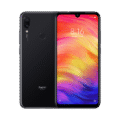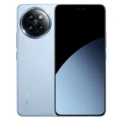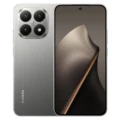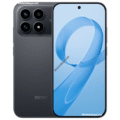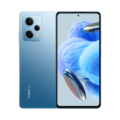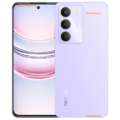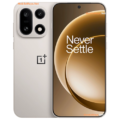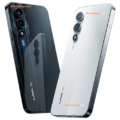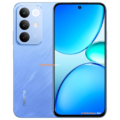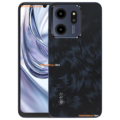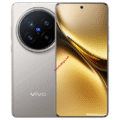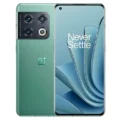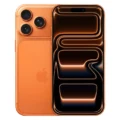Price List: Under Tk.5,000 | Tk.5001-10000 | Tk.10001-15000 | Tk.15001-20000 | Tk.20001-30000 | Tk.30001-40000 | More Mobiles
- Home
- All Mobile
- Xiaomi
- Xiaomi Redmi Note 13 Turbo
Xiaomi Redmi Note 13 Turbo
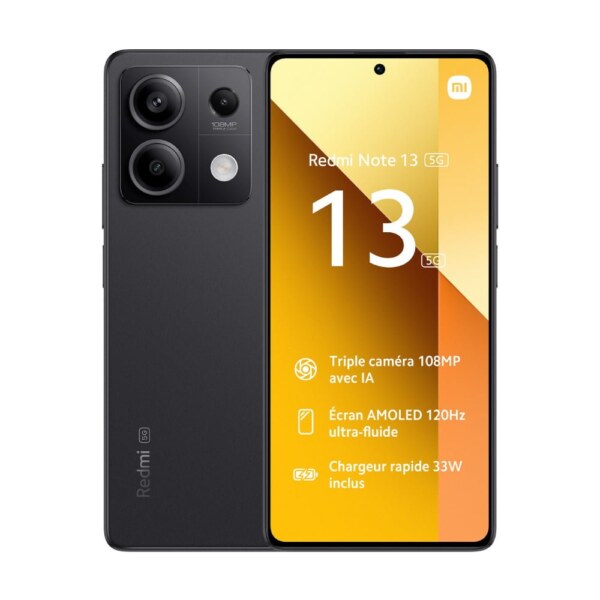


Specifications
Price in Bangladesh
| Expected Price | Coming soon |
General
| Device Type | Smartphone |
| Released | December, 2025 |
| Status | Available |
Hardware & Software
| Operating System OS => Every computer system run on a base software called Operating System (OS). Operating System controls all basic operations of the computer (such as smartphone, PDAs, tablet computers and other handheld devices). The Operating System allows the user to install and run third party applications (apps), apps are used to add new functionality to the device. | Android |
| OS Version | v13 |
| Chipset Chipset is a group of integrated circuits designed to perform one or a more dedicated functions, often with real time computing constraints, Popular smartphones are equipped with more advanced embedded chipsets that can do many different tasks depending on their programming. | Qualcomm SM7475-AB Snapdragon 7+ Gen 2 (4 nm) |
| CPU CPU (Central Processing Unit) mostly known as processors, CPU processes instructions in order to carry out certain functions that make your device operate properly. Processors are often described as the brain of computers, smartphones and tablets, Smartphones and tablets rely on processors to carry out their every task, Processors are an incredibly important factor in selecting any type of computing device, including your smartphone. | - |
| GPU GPU (Graphics Processing Unit) is a single-chip processor designed to rapidly manipulate and alter memory to accelerate the creation of images in a frame buffer intended for output to a display, This includes things such as lighting effects, object transformations, and 3D motion. | - |
| RAM (Memory) RAM (Random Access Memory) is a type of computer memory that can be accessed randomly, any byte of memory can be accessed without touching the preceding bytes that allows information to be stored and accessed quickly from random locations. RAM is the most common type of memory found in computer systems, smartphones, tablets and other electronic devices. | 8 GB, 12 GB, 16 GB |
Design
| Dimensions | - |
| Weight | - |
| Colors |
Black, Blue, White, Harry Potter Edition |
Display
| Display Type Display Technology => A number of display technologies and types used in mobile phones => TFT (Thin Film Transistor), IPS (In-Place Switching), OLED (Organic Light Emitting Diode), AMOLED (Active-Matrix Organic Light-Emitting Diode), Super AMOLED (an even advanced version of AMOLED), Resistive Touchscreen (Resistive touchscreens contain two layer of conductive material with a very small gap between them which acts as a resistance), Capacitive Touchsceen (Capacitive touchscreen technology consists of a layer of glass coated with a transparent conductor) | AMOLED |
| Size | 6.67 inches |
| Resolution | 1080 x 2400 pixels |
| HDR 10 / HDR+ support |
Rear Camera
| Camera Setup | Triple |
| Main Camera | 64 MP |
| Second Camera | 8 MP |
| Third Camera | 2 MP |
| OIS | |
| Video | 4K@30fps, 1080p@30/60/120/240fps |
Front Camera
| Camera Setup | Single |
| Secondary |
16 MP |
| Video | 1080p@30fps |
Battery
| Battery Type Battery Type => Cell phones run on various kinds of batteries depending on the manufacturer, phone size or shape and features. There are basically four types of cell phone batteries => Lithium Polymer, Lithium Ion, Nickel Metal Hydride and Nickel Cadmium. | Li-Ion (Lithium Ion) |
| Placement | Non-removable |
| Capacity Battery Capacity is a measure (typically in Amp-hr) of the charge stored by the battery, and is determined by the mass of active material contained in the battery. The battery capacity represents the maximum amount of energy that can be extracted from the battery under certain conditions. | 5000 mAh |
Storage
| Storage Capacity | 256 GB, 512 GB, 1 TB |
| USB OTG |
Network
| 2G Network |
GSM 850 / 900 / 1800 / 1900 - SIM 1 & SIM 2 |
| 3G Network |
HSDPA 800 / 850 / 900 / 2100 |
| 4G Network |
1, 3, 5, 8, 19, 34, 38, 39, 40, 41, 42 |
| 5G Network |
1, 3, 5, 8, 28, 38, 41, 77, 78 SA/NSA |
| SIM SIM (Subscriber Identity Module) is a small card that contains mobile network subscriber's account information. This allows the phone using the card to attach to a mobile network. The SIM card is most commonly associated with GSM and UMTS mobile networks. Moving a SIM card from one phone to another allows a subscriber to switch mobile phones without having to contact their mobile network carrier. SIM cards can also be used by a phone to store limited amounts of data, such as phone numbers and text messages. | Standard SIM |
Data
| GPRS GPRS (General Packet Radio Service) is a packet oriented mobile data service on the 2G and 3G cellular communication system's global system for mobile communications (GSM), Generally, GPRS is used for the purpose of wireless data transfer, such as sharing pictures and videos or browsing the Internet via a mobile phone connection. | |
| EDGE EDGE (Enhanced Data GSM Environment) is a wireless network technology generally considered the next step in the 2G network offers data transfer rates up to four times faster than ordinary GSM networks, Generally, EDGE is used for the purpose of wireless data transfer, such as sharing pictures and videos or browsing the Internet via a mobile phone connection. | |
| Speed | HSPA, LTE-A (CA), 5G |
| Web Browser Web Browser => a web browser is a software application used to locate, retrieve and display content on the World Wide Web, including Web pages, images, video and other files, The primary function of a web browser is to render HTML, the code used to design or markup webpages. | HTML5 |
Messaging
| SMS SMS (Short Messaging Service) is a text messaging service component of phone, Web, or mobile communication systems. It uses standardized communications protocols to allow mobile phone devices to exchange short text messages over the networks. | Yes |
| MMS MMS (Multimedia Messaging Service) is a standard way to send messages that include multimedia content (audio clips, video clips and images) to and from mobile phones over wireless networks using the WAP protocol. | |
| Email Email (Electronic Mail) is a system for receiving, sending, and storing electronic messages, Similar to a letter, email is text messages that may contain files, images, or other attachments sent via the internet to a recipient by using applications and software prograps. An email address is required to receive email, and that address is unique to the user. | Yes |
| IM IM (Instant Messaging) is an exchange of text messages through a software application, it enable you to create a kind of private chat room with another individual in order to communicate in real time over the Internet. | Yes |
Connectivity
| Bluetooth Bluetooth is a wireless communications technology for exchanging data between mobile phones, headsets, computers and other network devices over short distances without wires, Bluetooth technology was primarily designed to support simple wireless networking of personal consumer devices. | 5.3, A2DP, LE |
| Wi-fi Hotspot | |
| Infrared Infrared connectivity is an old wireless technology used to connect two electronic devices. It uses a beam of infrared light to transmit information and so requires direct line of sight and operates only at close range. | |
| USB | USB Type-C 2.0, OTG |
| GPS GPS The Global Positioning System is a satellite-based radio navigation system, GPS permits users to determine their position, velocity and the time 24 hours a day, in all weather, anywhere in the world, In order to locate your position, your device or GPS receiver must have a clear view of the sky. | GPS (L1), GLONASS (G1), BDS (B1I+B1c), GALILEO (E1), QZSS (L1) |
| NFC NFC (Near field communication) is a set of standards for smartphones and similar devices to establish peer-to-peer radio communications with each other by touching them together or bringing them into proximity, usually no more than a few inches. |
Media
| FM Radio | No |
| Alert Types | Vibration, MP3, WAV ringtones |
| Loudspeaker | Yes |
| 3.5mm Jack | Yes |
Sensors & Security
| Fingerprint Sensor |
More
| Made By | China |
Performance Tests
Xiaomi Redmi Note 13 Turbo Price in Bangladesh
The Xiaomi Redmi Note 13 Turbo is expected to launch soon in Bangladesh with a starting price that’s yet to be officially announced. However, the anticipated price is likely to vary depending on the storage variant, including 256GB, 512GB, and an expansive 1TB option.
This upcoming smartphone is positioned as a mid-range powerhouse and is drawing attention with a well-rounded spec sheet. From a vibrant 6.67-inch AMOLED display and a capable 64MP triple camera setup to a massive 5000mAh battery and next-gen Snapdragon 7+ Gen 2 chipset, this phone is clearly engineered for performance-driven users. Whether you’re into gaming, content creation, or just need an everyday multitasking machine, the Redmi Note 13 Turbo aims to deliver without pushing into flagship price territory. The availability of a special Harry Potter Edition also adds a unique charm for collectors and fans alike.
Xiaomi Redmi Note 13 Turbo Specifications
Display and Design
The Xiaomi Redmi Note 13 Turbo features a 6.67-inch AMOLED display with a 1080 x 2400 pixel resolution, offering crisp visuals and rich color reproduction. The panel supports HDR10/HDR10+, enhancing contrast and detail for video playback and gaming. Though the refresh rate isn’t officially confirmed, it’s expected to include a high refresh rate (likely 120Hz), in line with modern mid-range standards.
Design-wise, this model keeps things sleek and stylish, launching in Black, Blue, White, and a limited Harry Potter Edition, appealing to both minimalists and pop culture fans. Exact dimensions and weight are yet to be disclosed, but based on the series lineage, you can expect a slim and lightweight profile with a premium glass or polycarbonate back.
Performance and Processor
At its core, the Redmi Note 13 Turbo is powered by the Qualcomm Snapdragon 7+ Gen 2 (4nm) chipset—one of the most powerful processors in the mid-range category. Though CPU and GPU specifics are not listed, this SoC is known for delivering flagship-like performance in gaming and multitasking.
Available in 8GB, 12GB, and 16GB RAM variants, and up to 1TB of internal storage, users will enjoy plenty of space and smooth performance. While there’s no mention of expandable storage, the large internal memory options make it a non-issue for most.
This phone is optimized for everything from high-end mobile gaming to heavy multitasking, making it a go-to device for power users who don’t want to splurge on a flagship.
Camera and Video
The Xiaomi Redmi Note 13 Turbo sports a triple rear camera system:
- 64MP primary sensor – likely with a wide aperture for crisp, detailed photos
- 8MP ultrawide sensor – ideal for landscapes and group shots
- 2MP macro sensor – for close-up shots
The main camera supports 4K video at 30fps and 1080p at up to 240fps, offering a range of creative video recording options.
On the front, there’s a 16MP selfie camera capable of shooting 1080p videos at 30fps, perfect for video calls and social media content. Features like AI beauty mode, portrait mode, and night mode are expected to enhance the photography experience.
Battery and Charging
Fueling the device is a robust 5000mAh Li-Ion battery, which is non-removable. While official fast charging specs haven’t been disclosed, Xiaomi’s mid-range devices typically offer 67W or faster charging. Expect a full day of intensive use on a single charge, with efficient power management supported by the 4nm chipset.
Connectivity and 5G Support
The Redmi Note 13 Turbo supports a wide range of bands across 2G, 3G, 4G, and 5G networks. Key connectivity highlights include:
- Dual SIM support
- Bluetooth 5.3 with A2DP and LE
- Wi-Fi hotspot and Infrared blaster
- USB Type-C 2.0 with OTG support
- Comprehensive GPS support (GPS, GLONASS, BDS, GALILEO, QZSS)
This ensures seamless connectivity whether you’re browsing, streaming, or navigating on the go.
Additional Features
- Fingerprint Sensor – Likely side-mounted or under-display (not confirmed)
- Face Unlock – Expected via the front camera
- Android 13 with Xiaomi’s MIUI skin – Clean and user-friendly interface
- Stereo Speakers – For immersive audio
- 3.5mm Headphone Jack – A welcome inclusion for wired audio lovers
- NFC Support – For contactless payments and data transfers
- Harry Potter Edition – A special aesthetic touch for fans
Reason to Buy
- Flagship-grade Snapdragon 7+ Gen 2 chip at a mid-range price
- Massive storage options up to 1TB
- Vibrant AMOLED display with HDR support
- Feature-rich camera setup with 4K video
- 5G-ready with broad connectivity options
- Long-lasting 5000mAh battery
- Special edition designs for collectors (Harry Potter Edition)
- Runs on Android 13 with expected MIUI optimizations
Verdict
The Xiaomi Redmi Note 13 Turbo delivers a compelling package for users seeking flagship-like performance without the flagship price. Its combination of a powerful Snapdragon chipset, AMOLED display, large storage, and solid camera capabilities make it ideal for gamers, content creators, and heavy users. Add in thoughtful extras like stereo speakers, 5G connectivity, and special editions, and you have a standout choice in the mid-range segment. This phone is tailor-made for those who want top-tier performance and features without breaking the bank.
FAQ
Q: What is the price of the Xiaomi Redmi Note 13 Turbo in Bangladesh?
A: The official price hasn’t been announced yet, but it’s expected to launch soon with competitive pricing across storage variants.
Q: Does the Redmi Note 13 Turbo support 5G?
A: Yes, it supports multiple 5G bands including SA/NSA configurations.
Q: What are the available storage options?
A: 256GB, 512GB, and 1TB internal storage options are available.
Q: Is there a microSD card slot for storage expansion?
A: The data does not confirm expandable storage, but the large built-in options compensate for it.
Q: Does it have fast charging?
A: While specific wattage isn’t mentioned, Xiaomi typically includes fast charging in this series.
Q: What version of Android does it run?
A: It runs on Android 13, likely with Xiaomi’s MIUI on top.
Q: Is the Xiaomi Redmi Note 13 Turbo good for gaming?
A: Yes, with the Snapdragon 7+ Gen 2 processor and up to 16GB RAM, it’s well-suited for gaming and multitasking.
User Reviews
Disclaimer Note
We do not guarantee that the information of this page is 100% accurate and up to date.

